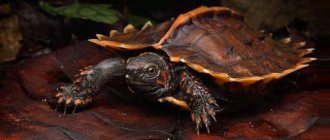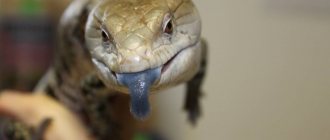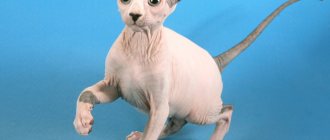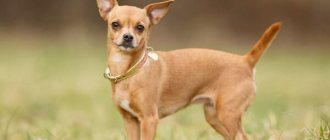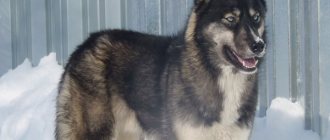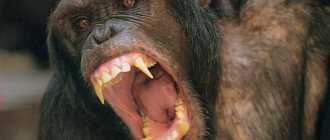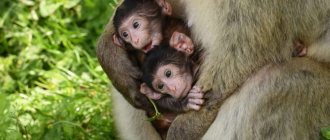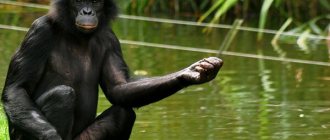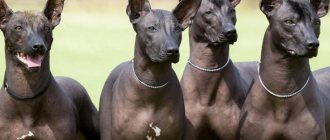Chimpanzees, like other monkeys and some other animals and humans, sometimes suffer from alopecia, a disease that can cause them to lose hair from all over their bodies. These poor creatures attract many zoo visitors. Hairless monkeys have alopecia, an autoimmune disorder that causes hair loss in animals and also occurs in humans.
Is hair loss a disease?
Some animals are born hairless, and some lose hair for other reasons. There is a Guru from the Mysore Zoo in India who was hairless when he was rescued from a circus; Jumbo at Twycross Zoo in the UK; Cinder is a hairless chimpanzee at the St. Louis Zoo. Speaking of humans, we always expect some amount of hair loss as we age. There are a number of mammals and birds that are completely unusual to see without fur and plumage.
Tarsiformes
Sometimes included in the infraorder Apes. These conflicting classifications underlie the modern debate about the evolution of early primates
Philippine tarsier
If you have never encountered this animal before, then when you come into contact with it you risk getting seriously scared. The Philippine tarsier is a difficult monkey. He differs from others with his huge eyes, which he protrudes forward.
The color of the animal is bright red, but sometimes grayish individuals are also found. The Philippine tarsier, despite its terrifying appearance, is a cute and friendly animal. He is very fluffy and has a long tail.
In its behavioral characteristics, this animal resembles more a toad than a monkey. Its main food is frogs. The Philippine tarsier hunts them by jumping.
Its forelimbs have small suction cups, thanks to which it quickly climbs trees and does not fall from them. The Philippine tarsier sleeps most of the day, during which time it is at the top of the tree. To avoid falling from it, the monkey wraps its long tail around the nearest branch.
Philippine tarsier
Alopecia: causes
Alopecia (hair loss) occurs in some captive primates and is of interest to colony managers and veterinarians. The characteristics, potential causes, and treatments for this condition are reviewed here. Numerous factors can be associated with hair loss and range from natural processes (eg, seasonality, aging) to various biological dysfunctions, including vitamin and mineral imbalances, endocrine disorders, immunological diseases and genetic mutations.
Bacterial and fungal infections, parasite infestation, and atopic dermatitis may also be implicated as possible causes of alopecia. Finally, psychogenic factors, such as stress, play an important role. Depending on the suspected cause of hair loss, different treatment strategies can be pursued. Alopecia in primates is a multifaceted disorder with many potential sources.
Broad-nosed monkeys or New World monkeys
Family marmosets
Rosalia
This little monkey is hard to miss. She stands out from the others with her bright red fur. The presence of long hair on the primate's neck makes it look like a lion. One gets the impression that she has a lush mane, like the king of beasts.
Rosalia's muzzle is not covered with hair. It is painted gray. This red monkey lives in the American tropics. Thanks to its long forelimbs and tenacious nails, Rosalia is an excellent tree climber, deftly jumping from branch to branch.
It is difficult to tame such a primate; they are not as sociable as, for example, chimpanzees. In addition, Rosalia is one of the noisiest primate species. She is valued, first of all, for her shiny, lush coat.
Pygmy marmoset
This is the smallest species of primate. The monkey's body size ranges from 10 to 15 cm. The pygmy marmoset has a long tail, which is significantly larger than its body. Its length ranges from 17 to 23 cm.
The body weight of this funny monkey barely reaches 200 grams. However, when you look at her, it's hard to believe. The reason is the long and lush fur that covers its entire body. Because of it, a visual misconception is created regarding the weight of the animal.
The fur color of the pygmy marmoset is yellow-olive. This funny monkey lives in the forests of South America. Their peculiarity is the existence in one group, which includes several generations. In each of them there is a clear social division.
The pygmy marmoset communicates with other individuals by searching their fur for minerals and insects. This is how the animal expresses its care and affection. These monkeys protect members of their group and make sure that they do not come into contact with strangers.
Pygmy marmoset
Marmoset Göldi
The second name of this funny monkey is “Callimico”. This is an unusually active animal, often preferring to move by short jumps. The marmoset is a small monkey whose body length barely reaches 20 cm.
Its tail is slightly longer, up to 30 cm. This species lives in South America. This species is found in the Amazon, Brazil, Peru and other places on Earth with a hot climate. Most often, the body of the marmoset is colored brown-gray.
Grain-tailed monkeys
Capuchin
A distinctive feature of these monkeys is their wide nose. Because of him, they were nicknamed “broad-nosed”. The capuchin is a small animal, the size of which is 55-60 cm (without tail).
This friendly animal climbs trees, tightly grasping branches with its tail, which, by the way, is very long (about 1.5 meters). The capuchin is one of the most beautiful monkeys. The color of her coat can be gray or red.
These creatures feed not only on plant, but also on animal food, namely: frogs, succulent shoots, nuts, etc. Capuchins prefer to live in large wooden crowns. They are considered to be school animals.
Saymiri
The second name for this small primate is “squirrel monkey.” This name was given to it because of its similar dimensions to a rodent. Despite her large brain, Saimiri lacks the intellectual potential of a chimpanzee. The thing is that this organ of hers is absolutely devoid of convolutions.
The color of the animal's fur is different. There are gray or red individuals. The head of the saimiri is black, and the eye area is white. Because of such an unusual coloring of the head, the monkey was nicknamed “dead”.
Saimiri's favorite food is small birds. She cleverly hunts them. However, it is not possible to feast on them often, so the monkey eats mainly plant foods.
Spider monkeys
Howler
In the wild, this primate acts as an alarm clock, that is, it makes a sound that wakes everyone up at the same time. The monkey got its name precisely because of this property.
Howler monkeys are considered to be school animals. One group can contain from 10 to 17 individuals. They live mainly in tall trees. The howler monkey's diet consists of tree buds, stems or plant bulbs.
The length of a standard male howler monkey is 70 cm, and that of a female is 45 cm. A distinctive feature of the animal is its very dense and long fur of beige, red or black color. The monkey is also distinguished from other primates by its large mouth.
Brown myriki
This primate is one of the largest in the wild. Its body length ranges from 60 to 80 cm. Males are slightly larger than females. Each such animal has a long tail, more than 1 meter.
The fur color of this animal is dark red. The face of this funny monkey is dark in color. It is a Brazilian endemic that is at risk of extinction. The state annually takes measures aimed at protecting and increasing the population of this species.
Saka monkeys
Bald uakari
different species of monkeys in the world but the hairless uakari is one of the most unusual. This type of primate is poorly studied, and moreover, it is at the stage of extinction. This animal lives in the Amazon forests. His appearance cannot but surprise. The entire body of the bald uakari, except for the head, is covered with long golden hair. However, his muzzle is completely devoid of hair. Moreover, it is painted in bright pink color.
The bald uakari is a pack animal. It associates with other primates, forming numerous groups of up to 200 individuals. Each pack has a strict division of social roles and hierarchy.
The favorite food of these unusual animals is fruit. In the Amazon forests they are easy to obtain, especially after a rainstorm. After waiting for it to complete, the animals leave the trees and go to the ground to pick up fruits dropped by the rain.
Pale Saki
Copper Jumper
Common autoimmune disorder
Alopecia often results in unpredictable hair loss. In most cases, hair loss occurs in small patches, sometimes this can lead to complete hair loss on the scalp (alopecia totalis) or in extreme cases the entire body (alopecia universalis). The condition can affect anyone regardless of age or gender, although most cases occur before age 30.
Alopecia areata often develops suddenly, over a period of several days. There is little scientific evidence that alopecia is caused by stress. There is currently no cure for alopecia. This disorder affected one monkey at the St. Louis Zoo. A year after she started losing her first hair, Cinder became a completely bald monkey.
As a result, the poor animal was diagnosed with alopecia universalis, or hair loss all over the body. The monkey died in 2009 after suffering from a cold.
Narrow-nosed monkeys or Old World monkeys
Great apes
Chimpanzee
It is the best known species of great ape . Such a representative of the animal world is considered one of the most intelligent living creatures in nature, after humans, of course. Scientists distinguish 2 modern types of this animal: ordinary and dwarf. The second name for the pygmy chimpanzee is “bonobo”.
This is a gregarious mammal, but the size of its group is small, up to 10 individuals. An interesting feature is that when such a monkey reaches adulthood, it leaves its pack, but not to remain alone. Leaving one group means for chimpanzees creating a new one.
These look like people in the photo They have a meaningful look that expresses a specific emotion: annoyance, doubt, suspicion or even envy. The presence of excellent intellectual potential in chimpanzees is confirmed by their foresight. The monkey prepares for sleep in advance by making a comfortable sleeping place out of large and soft leaves.
Pictured is a group of Chimpanzees
Orangutan
Some species of great monkeys , despite their impressive size, are friendly. These include the orangutan. This is a very smart monkey with well-developed communication skills.
The color of the animal's fur is red. Some representatives of this species have gray fur. Despite its weak legs, the animal moves well through trees and the ground. It is distinguished by its large head and heavy weight (up to 300 kg).
Orangutans prefer to live high in trees. They rarely engage in fights with forest predators, since the latter are afraid of them. But, despite its friendly nature, the orangutan can attack first if it senses danger. This large monkey feeds exclusively on plant foods.
Gibbon
The gibbon is considered one of the small-sized anthropoid primates. It can be found in South Asia. The gibbon is one of the few monkeys that does not have a tail. This is a beautiful animal with long, dense hair of dark, red or ash color. A distinctive feature of this monkey is its long forelimbs. They are much longer than the back ones.
Thanks to their long legs, they easily climb from branch to branch, covering vast distances. In 1 jump, a gibbon can jump 3-4 meters. This monkey is considered a monogamous mammal. This means she mates for life.
When a male gibbon grows up, he can leave his parents and go in search of his female. If he does not express a desire to leave, he will be expelled by force. These beautiful animals feed on fruits and some plants. Very rarely, a gibbon sneaks into a bird's nest to eat eggs.
Gorilla
This is one of the largest species of primates. The size of a male gorilla can reach 2 meters. Such an individual weighs from 140 to 160 kg. The female gorilla is 2 times smaller than the male, that is, her weight ranges from 70-80 kg. Most of the time, these large primates walk on 4 limbs. But, being on the ground, they prefer to move on two hind legs, that is, to walk like a person.
Despite its aloof character and large size, the gorilla is not a predator. She eats plant foods. This monkey's favorite food is bamboo shoots. The gorilla supplements its diet with nuts and celery, and less often with insects.
There is practically no salt in the foods consumed by gorilla, but their body needs it. For this reason, the animal instinctively strives to eat clay rich in minerals, including salt. As for water, the monkey is indifferent to it. She gets water from plant foods, so she rarely visits a pond to drink.
Monkeys
Indian macaque
It is one of the widespread monkey species in India . The macaque lives in forest areas, but this does not prevent him from going beyond the boundaries of his village and going to densely populated cities.
Yes, this cute little animal is not afraid of people at all. Mothers of such a mammal treat their children very affectionately. There are a lot of photographs online that show touching hugs from members of the same family of this monkey species.
The body of the Indian macaque is gray-brown. Its fur is sparse and loose. The animal's muzzle is pink, not covered with fur. The body length of a medium-sized individual is 60 cm.
The Indian macaque is a gregarious animal. In one group there are from 60 to 80 such animals. The period of maximum activity of the monkey occurs in the first half of the day. During these hours, the Indian macaque is mainly at the top of the tree.
Indian macaques
Green monkey
Among all the monkey species in Africa , the marmoset is the most popular. It was called green not because its body is painted exactly this color. It is rather gray with an olive tint. When an animal is on a tree, it is difficult to notice it, because the shade of its fur merges with the color of the vegetation that surrounds it.
The green monkey is a species of small monkey . The length of its body barely reaches 40 cm. This measurement is taken without the tail, the length of which, by the way, can reach 1 m. The weight of an average-sized green monkey is 3.5 kg.
Her diet consists of:
- Berries;
- Tree bark;
- Insects living under the bark;
- Cereals;
- Bird eggs:
- Fruits.
Rarely does the green monkey allow itself to feast on small vertebrates.
Monkey Brazza
These inhabitants of Central Africa are not like other primates. They are significantly distinguished by their unusual appearance, or rather by their muzzle, colored olive, beige or red.
The back of the animal is wide and strong. His “calling card” is a bright red stripe on the frontal part of the body. Due to the prominent beige color below the monkey's chin, it gives the visual impression that it has a mustache.
The male Brazza monkey is much larger than the female. His weight is from 6 to 8 kg, and hers is from 3 to 4 kg. This representative of the fauna is one of the best camouflages in wildlife. He prefers to live with his family members. Each group of these animals is headed by a leader, the father of the family.
The animal spends almost the entire waking period at the top of the tree. Thanks to its huge cheek pouches, like those of a hamster, the Brazza monkey can take up to 300 grams of food into the oral cavity, preserving it from theft of other individuals.
Tonkinese rhinopithecus
The “calling card” of this small monkey is its large lips. The lower part of the lips is fuller and moves forward slightly. The color of this part of the body is pink.
The Tonkinese rhinopithecus is a very beautiful monkey. She is as human-like as possible with her behavior and calm character. The second name of this species is “snub-nosed monkey.” These animals spend most of the day on the tree. Tonkinese rhinopithecus is one of the endangered primates. Unfortunately, its population is declining every year.
Snub-nosed golden monkey
This representative is added to the list of rare species of monkeys Why was the animal called “snub-nosed”? Its name speaks for itself. The animal's nostrils are well formed, they are large and deep, but weakly expressed due to the too flattened shape of the nose.
The golden snub-nosed monkey is very noticeable. She stands out among other representatives of the fauna by her appearance, or more precisely, by her lush orange fur covering her entire body. The hair on the top of the head is shorter.
But that is not all. The face of this beautiful monkey is painted snow-white, making it stand out even more. In appearance, she resembles a red panda. Today, there are no more than 20 thousand snub-nosed golden monkeys in the world.
Proboscis
This monkey is hard to miss. It’s not for nothing that she was nicknamed “nosy”. She stands out among other primates with her large nose hanging down. It resembles a cucumber in length and shape. The front part of the proboscis monkey is lighter. The fur on his chest is shorter than on his back. Its color is gray-red. The body size of a medium-sized individual is 70 cm. Male proboscis whales are larger than females.
The period of their maximum activity occurs in the first half of the day. They live in the tropics. An important requirement for a settlement location is the presence of a nearby body of water. The proboscis monkey is the best swimmer among all monkeys. Underwater it can swim from 15 to 25 meters, without surfacing to breathe. This monkey is one of the few “walking” species.
This means that the proboscis monkey, unlike many primates, is able to travel long distances, moving on its two hind legs, like a human. The proboscis monkey is a school animal. One group can accommodate from 10 to 30 individuals. The males of this species lure the female with their nose. If he is large and fleshy, the male has every chance of attracting the attention of the female.
Langur
In India, these creatures are highly valued. In some Indian temples you can even see figurines of langurs. These small monkeys are known for their unstable behavior. Usually, they are friendly with people and animals, but if langurs feel threatened, they will certainly attack.
The langur is a school animal. In one flock there are from 35 to 50 individuals. Thanks to the special structure of the digestive system, these small monkeys are able to digest a huge amount of foliage eaten in one meal. As soon as a female langur gives birth to a baby, she takes it in her arms and cares for it for a long time.
Golden langur
This small monkey belongs to the order of marmosets. Zoologists classify it as an endangered species. Today, the population of the golden langur does not exceed 1000. This monkey is distinguished by its bright yellowish-red fur that covers its entire body. Its muzzle is hairless and dark black. Another distinctive feature of the golden langur is its meaningful gaze. The animal's favorite food is fruit.
Golden langur
Colobus
In appearance, the colobus resembles more a soft toy than a living creature. He is considered a beautiful beast. A wide white stripe runs along the entire length of the colobus body. It harmonizes perfectly with the black fur of the animal.
The male colobus is larger than the female. A specific feature of this animal is its long bushy tail, the basic function of which is to regulate the movement of the body during a jump. Colobus is one of the best jumpers among primates.
Baboon
The appearance of these primates is memorable. It is distinguished from other jungle inhabitants by such parameters as: a huge head and long hair that grows in different directions on its cheeks. Because of this, when looking at a baboon, you might think that he has a thick beard.
The baboon is a large monkey with which no jungle inhabitant wants to quarrel. It's all about her large fangs, with which she can injure almost any representative of the fauna.
Such a monkey can grow up to 1 meter long. She has a strong body and very tenacious forelimbs. However, the baboon's waking period is spent primarily on the ground. These large animals sleep at the foot of mountains or cliffs.
Baboon
Social communication in these primates is very well developed. They have a huge number of sounds in their arsenal, which they exchange daily. In nature, it is almost impossible to meet a solitary baboon, since it constantly communicates with other individuals similar to itself. The baboon is a large monkey. The color of the animal's fur is gray-red. It settles not only in steppe, but also in mountainous areas.
The baboon's diet consists of: succulent shoots of plants, fruits and insects, and less often - small animals. Many people consider the baboon a pest, as it often sneaks into agricultural crops, destroying them.
Mandrill
This monkey differs from others in a large number of shades. There is black, brown, white, red and even blue fur on her body. But this is not the only difference between the mandrill. The animal stands out among other primates due to its large buttocks, which are practically not covered with hair.
When looking at this monkey, you might get the impression that its backside has been shaved. However, it is not. This is the kind of mandrill Mother Nature created. This is a fairly large animal, weighing up to 25-30 kg. Mandrill prefers to settle in rocky areas. An interesting observation is that this monkey can breed with other primate species, such as the baboon.
Mandrill is a school animal. He prefers to team up with other monkeys, creating large communities. One such group can include from 50 to 250 individuals. Their diet consists of insects and plants. Less commonly, mandrills eat lizards.
Treatment of rabbit conjunctivitis
A veterinarian can accurately diagnose and eliminate the root cause of the disease. Before visiting a specialist, the rabbit should independently wash the numb and stuck together areas with a weak solution of potassium permanganate (potassium permanganate). The rinsing solution should be pale pink in color.
Acute form
The acute or catarrhal form at the initial stage is easier to treat.
The development of the disease occurs quickly with its main symptoms and manifestations. Primary signs of inflammation must be eliminated by washing the eyes. You need to wash the affected areas yourself with antiseptic drugs. The resulting dried crusts are soaked and then cleaned:
- Albucid solution 3%;
- a weak solution of potassium permanganate (2 crystals per glass of water);
- furatsilin (ready solution or dissolved tablet in 12 glasses of water).
In the acute form of the disease, the veterinarian prescribes eye treatment with the application of anti-inflammatory ointments or drops to the eyelid area.
Primary signs of the development of the disease should alert breeders. The disease can become purulent.
Purulent form
Infection with this form of damage to the eye mucosa spreads rapidly. The purulent form is characterized by severe swelling of the conjunctiva and copious discharge. The discharge dries and forms a brown crust, sticking the eyelids together. Wet fur begins to fall out, painful erosions and ulcers form on the cheeks.
Self-treatment consists of washing with the same solutions as for catarrhal form: instillation of antibacterial eye drops, treatment with antimicrobial or antiviral drugs. Irritated areas of skin under the eyelids are wiped and treated with iodoform or boron ointment. Tetracycline, hydrocortisone eye ointment is placed under the animal's eyelid.
The veterinarian prescribes treatment for purulent inflammation of the conjunctiva with antibacterial and antiviral drugs. The drugs suppress the activity of pathogenic microflora, reducing irritation. Corticosteroid drugs are placed under the eyelid. Treatment and treatment of purulent areas is best carried out by a specialist until the animal has fully recovered.
Inflammation of the mucous membrane in any degree of damage can be cured. Untimely treatment can become chronic with more complex consequences including loss of vision.
Infectious diseases that cause paw damage
Listeriosis in rabbits
One of the reasons why a rabbit's hind legs failed is listeriosis. This is an infectious disease of bacterial origin that affects the mammary glands, nervous and genitourinary systems. Most often, young animals and pregnant female rabbits are affected. Goats, sheep, pigs, cattle, poultry and people can get sick.
Sources of infection
- Sick or recovered rabbits (long-term carriage, up to 2.5 months).
- Rodents (rats and mice).
- Wild animals (foxes, hares and others).
- Insects (lice, fleas, ticks, gadfly larvae).
- Man (as a mechanical carrier).
Infection can occur through contact with sick animals, through nutrition (contaminated feed and bedding), through damaged skin and mucous membranes.
Manifestation of the disease
The disease can occur in hyperacute, acute, subacute, chronic (latent) and atypical forms. Manifested by the death of pregnant rabbits (immediately after or before childbirth), abortion during pregnancy, mummification (drying out) and decomposition of fetuses, mastitis, metritis and endometritis (inflammation of the uterus), death of the entire litter after childbirth, brown vaginal discharge, paresis or paralysis of the hind legs. limbs in rabbits. Rabbits lose weight, eat poorly or refuse food altogether, and their fur becomes disheveled and dull.
With an atypical form of the course, the clinical picture may be similar to a false pregnancy. In such a situation, the rabbits die while they are still embryos, and the female rabbit cannot become pregnant and give birth. Other signs of the disease may be absent, although the animal remains a carrier of the pathogen.
Carrying out therapeutic measures in rabbit farms is economically unjustified. Even if recovered, animals remain carriers and will be infertile, and there is also a risk of infection in humans. Sick rabbits are killed, the rest are vaccinated. Meat can be eaten, but only after long-term boiling (at least two hours). The skins are disinfected.
For the treatment of decorative rabbits, antibiotics ("biomycin", "tetracycline" and others), immunostimulants ("roncoleukin"), stimulants of metabolic processes ("catozal", "gamavit", "mikrovitam"), homeopathic drugs ("traumeel", " Engistol", "Echinacea compositum").
If there are signs of damage to the nervous system, the therapy described above (treatment of listeriosis) is used.
Prevention
For prevention it is necessary:
- Examination and quarantine of incoming animals.
- Control of insects and rodents (disinsection and deratization).
- Control and purchase of feed only from reliable and prosperous farms.
- If there is a threat of infection, vaccination is carried out (with a vaccine from the AUF strain).
Encephalozoonosis of rabbits
The disease is caused by intracellular parasites of the protozoan class, manifested by damage to the nervous system, as well as the kidneys and other internal organs (liver, spleen, heart, eyes, intestines). Infection occurs through the nutritional route, the pathogen is excreted in urine, feces, and a transplacental (intrauterine) method of infection is also possible.
Symptoms
Pathology can manifest itself:
- Loss of coordination and torticollis.
- The pupillary reflex may be absent.
- Movement of the animal in a circle.
- Paresis, paralysis and atrophy of the muscles of the limbs.
- Development of uveitis (inflammation of the eye vessels) and lens opacity.
A feature of the pathology is that in most animals the disease occurs as a carrier and begins to manifest itself only when exposed to factors that weaken the immune system. An accurate diagnosis is made only based on the results of laboratory diagnostics.
Prevention
- Timely disinfection.
- Prevention of weakening and support of immunity in animals (high-quality feeding, absence of stress, drafts, hypothermia).
Pathological causes of hair loss in rabbits
The quality of wool is a reflection of the health of the animal. Limp, dull, matted fur are the first signs of poor health in a rabbit. Health is established from the early stages of embryogenesis. If the female did not receive a nutritious diet, her offspring will necessarily lag behind in development. Rickets affects the quality of the coat. On the other hand, even in healthy rabbits, housing conditions have an impact on health.
There is a known group of skin diseases of rabbits that have fundamentally different causes.
- Dermatitis – inflammatory skin diseases (parasitic, infectious)
- Dermatoses are diseases of a metabolic nature, without inflammation in the layers of the dermis.
For people who do not have honey. or vet. education, I inform you.
- The ending (-itis) in the name of the disease means the inflammatory cause of the pathology.
- The ending (-oz, oma) in the name of the disease means a metabolic disorder as the cause of the pathology or oncology.
Examples. Arthritis is inflammation of the joints. Arthrosis is a group of dystrophic joint diseases. Also carcinoma, sarcoma, etc. Dystrophic is a person (animal) with a malnutrition of tissues and organs, and not a character in old jokes. I'll give additional information for veterinarians. These terms refer only to the cause of the disease. In pathogenesis there is always a mixture of forms of pathology (inflammation and dystrophy).
If the fear of contracting ringworm does not leave you, then find out more about ringworm and its types (trichophytia, microsporia, parasha) and read the opinion of an old veterinarian on this issue

